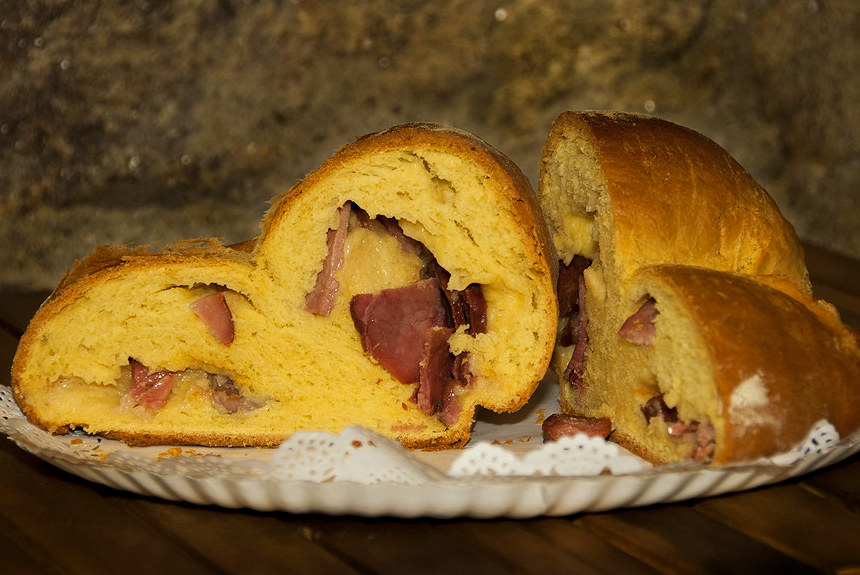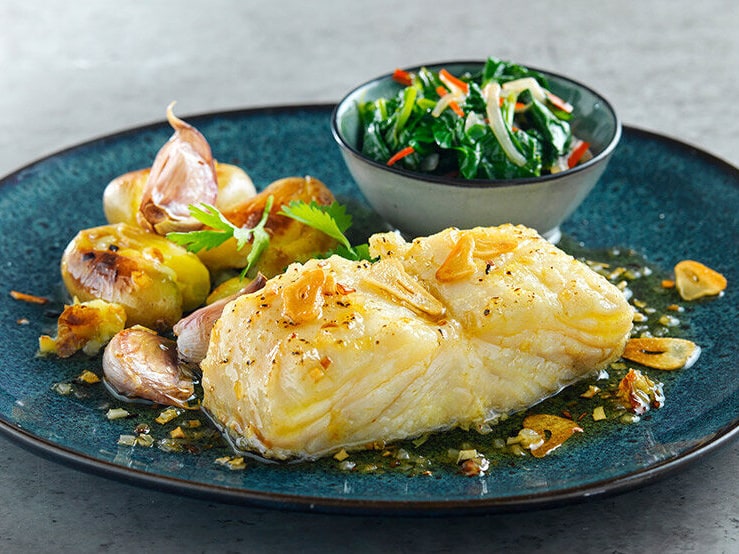Every year in Chaves, mothers and grandmothers gather around the masseira, a large wooden kneading tray used to craft bread and folares. In traditional homes, the wood-fired oven was an essential feature, often found in a small storage room alongside the harvest’s bounty. Here, women shared knowledge and passed down culinary traditions from one generation to the next.
The folar de Chaves is a cherished part of this heritage. Each family has its own variation—more or fewer eggs, slight differences in the choice of meats—but the essentials remain the same: high-quality smoked meats, farm-fresh eggs, and robust olive oil from Trás-os-Montes. The rest comes down to dedication, as making a folar is a true labor of love.
In Chaves, gifting a folar is a gesture of gratitude or a way to send a piece of home to loved ones far away. It’s not just food; it’s a way to keep connections alive and soothe nostalgia with every bite. The folar de Chaves carries with it the essence of tradition, identity, and affection—a testament to the love of mothers and grandmothers who preserve this cultural treasure.
If you’ve read this far, thank you. This humble writer from Chaves hopes you enjoy his mother’s recipe for folar de Chaves. 😊
Ingredients:
For the Dough:
- 4 cups all-purpose flour
- 1 packet (2 ¼ tsp) active dry yeast
- 1 cup warm water (110°F)
- 2 large eggs
- ¼ cup olive oil
- 1 tsp salt
- 1 tsp sugar
For the Filling:
- 6 oz chouriço, sliced thinly
- 6 oz presunto or prosciutto, thinly sliced
- 6 oz smoked bacon or pancetta, thinly sliced
Instructions:
- In a small bowl, dissolve the yeast in warm water with sugar.
- Let it sit for 5-10 minutes until foamy.
- In a large mixing bowl, combine the flour and salt.
- Add the yeast mixture, eggs, and olive oil.
- Knead the dough for about 10 minutes until smooth and elastic.
- Cover with a damp cloth and let it rise in a warm spot for 1-2 hours, or until doubled in size.
- Punch down the risen dough and divide it into two equal portions.
- Roll out one portion into a rectangle and place it in a greased or parchment-lined loaf pan, letting the edges hang over the sides.
- Layer half of the chouriço, presunto, and bacon over the dough.
- Roll out the second portion of dough and place it over the meat layers.
- Add the remaining meat on top, then fold the overhanging dough from the bottom layer over the top. Pinch the edges to seal.
- Cover the assembled bread and let it proof for 30 minutes.
- Preheat your oven to 375°F.
- Brush the top of the bread with a beaten egg for a golden crust.
- Bake for 35-40 minutes, or until the bread sounds hollow when tapped and has a deep golden-brown color.
- Allow the Folar de Chaves to cool slightly before slicing.
- Serve warm or at room temperature.


